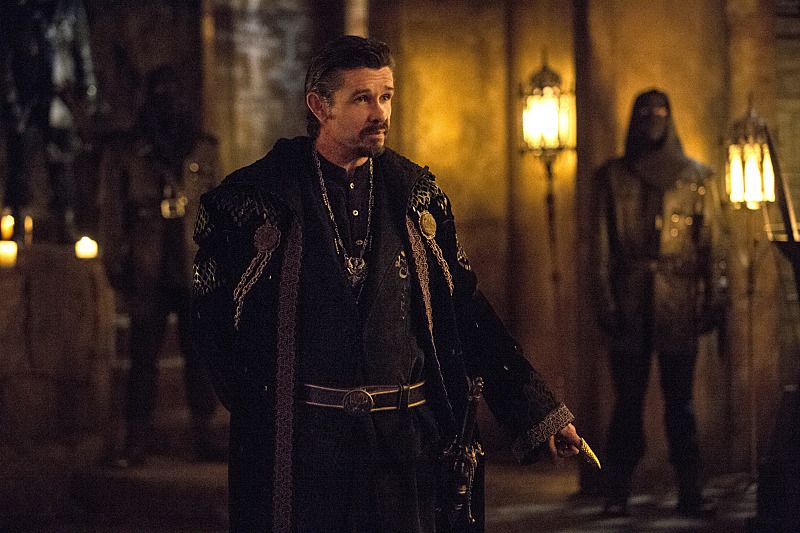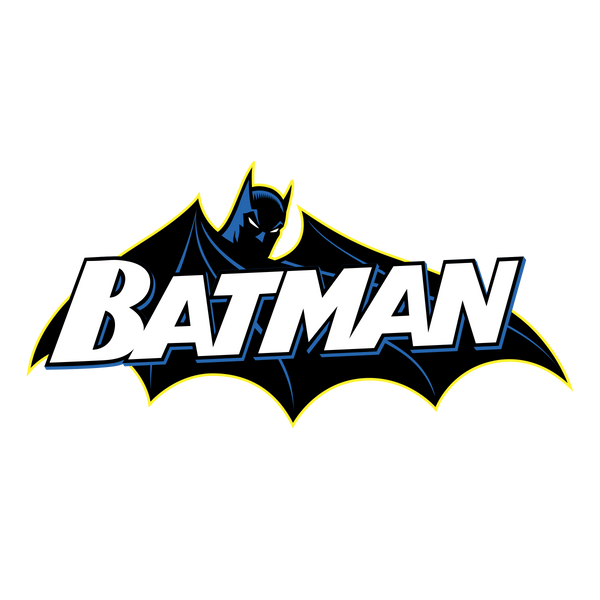
Ra's al Ghul: Between Immortality and Demonic Legacy
Among Batman's many enemies, Ra's al Ghul occupies a special place. Neither a mere criminal nor a mutated monster, he is at once a strategist, an ideologue, the leader of a millennia-old organization, and a symbol of refined fanaticism. His name, which means "demon's head" in Arabic, speaks volumes about his ambition: to purify the world by eradicating its corruption... even if it means destroying it in order to rebuild it better.
First appearing in 1971 by Dennis O'Neil and Neal Adams, Ra's al Ghul is a character at the crossroads of genres: an immortal lord, inspired by Eastern tales and the classic villains of Gothic literature. Unlike more impulsive adversaries like the Joker or Bane , he follows a cold, calculated, almost religious logic. He doesn't just want to beat Batman, he wants to make him his heir .
His appearance varies over time: sometimes depicted as a bearded warlord with the appearance of an alchemist, sometimes as a charismatic leader at the head of the League of Shadows or also the League of Assassins . But his goal remains the same: to impose a form of world order through purifying chaos. A vision he defends in the comics, but also in the films, where Liam Neeson masterfully embodied this role in Batman Begins .
👉 You can find Ra's al Ghul in our Batman figurine collection , or decorate your space with an iconic League of Shadows poster .
📚 To go further, also consult our article on Batman's little-known enemies or our analysis of the duel Batman vs Bane , another diverted disciple of the al Ghul ideology.
The Lazarus Pit: Between Occult Science and Corrupt Eternity
One of the most fascinating (and disturbing) aspects of Ra's al Ghul is his immortality. Unlike most of Batman's enemies, he doesn't actually age. He survives through the centuries thanks to the legendary "Lazarus Pit," a mystical spring capable of regenerating cells, healing wounds... and even resurrecting the dead.
But this power comes at a price. Each dip in the pit makes Ra's more unstable, more violent, more unpredictable. Immortality isn't a blessing; it's a curse in disguise . He's not just becoming eternal; he's also becoming increasingly dangerous. It's this slow, insidious madness that makes him more of a symbolic threat than a physical one.
In both the comics and the film Batman Begins , the Lazarus Pit is as much a legend as it is a dramatic catalyst. It raises profound moral questions: Should one live forever to lead the world? Or should one know how to die to make way for something better? Ra's, however, has already chosen. He will live to impose his vision, whatever the cost.
⚔️ This link between immortality and fanaticism has influenced other Gotham figures. We see it in Mr. Freeze , obsessed with survival, or in the Phoenix version of the Joker , who dismisses death as a sinister joke.
🎁 Fan of this esoteric dimension of the Batman universe? Explore our selection of Batman lamps or dark paintings inspired by Gotham and the League of Shadows.
The Lazarus Pit: Between Immortality and Curse
What truly sets Ra's al Ghul apart from all of Batman's other enemies is his ability to defy death. Thanks to a mysterious spring called the Lazarus Pit , he is able to heal from his injuries, rejuvenate, and even return to life after being killed. A power as fascinating as it is terrifying.
In the Batman universe, this immortality isn't just a nice-to-have. It's central to Ra's's ideology: to live long enough to see civilizations decline, humans corrupt the world, and to intervene "at the right time" to destroy and rebuild everything.
But at what cost?
Each immersion in the Lazarus Pit has increasingly unstable side effects:
- Loss of emotional control : uncontrollable outbursts of rage or euphoria
- Mental instability : paranoia, megalomania and hallucinations
- Addiction : Ra's becomes a slave to his own immortality
In Batman Begins , this idea is brilliantly illustrated: the Well is not shown literally, but Ra's's regeneration is suggested by his constant return, his physical resilience, and his lingering influence on Gotham through the centuries.
📚 To better understand this link between immortality and fanaticism, you can read our article “Why doesn’t Batman kill?” – a philosophy diametrically opposed to that of Ra’s al Ghul.
Ra's al Ghul and Batman: Enemies… or Spiritual Father?
While Ra's al Ghul is one of the Dark Knight's most formidable foes, their relationship goes far beyond a simple clash between hero and villain. It's complex, ambivalent, almost familial. Because Ra's isn't just out to destroy Batman: he wants to make him his heir .
In many stories, including the Batman: Son of the Demon saga, he considers Bruce Wayne the only person worthy of leading the League of Shadows. He admires his determination, his discipline, his sense of justice… while rejecting his compassion and his refusal to kill.
A bond strengthened by family
This bond is reinforced by Batman's relationship with Talia al Ghul , Ra's's daughter. Their love produces Damian Wayne , a son raised on blood and war. This lineage forever binds Bruce to the demon's legacy, whether he likes it or not.
- Ra's sees Bruce as an ideological successor
- Talia tries to win him over to their cause through love... or manipulation.
- Damian embodies the permanent conflict between two worldviews: justice and revenge.
🧩 You can find this bow in our LEGO Batman sets inspired by the Nolan trilogy.
An ideological legacy as seductive as it is dangerous
What makes Ra's al Ghul so significant in the Batman universe is that he's not just a megalomaniacal criminal. He represents an intellectual temptation, a moral vertigo. He embodies the following question: what if chaos could only be stopped by total control? What if, to eradicate corruption, one had to dare to become ruthless?
This speech resonates powerfully in the contemporary world. Ra's doesn't just sow fear: he preaches a radical order , an authoritarian vision of good, which fascinates as much as it disturbs. And that's the character's strength: he's credible . He could exist in our reality, as a cult leader, a political strategist, a fanatical leader with an implacable ideology.
For Bruce Wayne, Ra's is a distorted mirror. A constant "what if..." And it's this philosophical opposition, even more than their physical battles, that makes their confrontations so intense. Where Batman believes in redemption, Ra's believes in sacrifice. Where Bruce saves Gotham, Ra's wants to burn it to purify it.
📖 And to extend the reflection, also read our article “Why is Batman considered the ultimate detective?” – because understanding his enemies is also what makes him so formidable.
Ra's al Ghul isn't just an adversary: he's the embodiment of what Batman could have become... if he'd crossed the line. And that's precisely why we never forget him.
